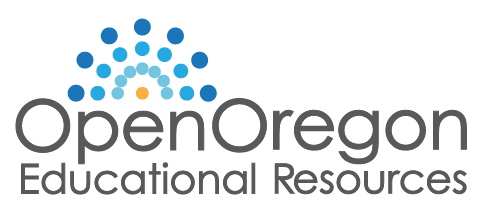Current events make the need for open education greater than ever, but there are fewer resources available to support this work. This series of posts considers three ways to change the frame on how advocates make the case for OER.
Balancing economic and academic arguments: A Goldilocks problem
Cost of attendance is of greater concern than ever because of the pandemic and the new hardships that students face as a result. Open education is responsive to the need for affordable textbooks, and also creates space for innovative pedagogy. Continued funding for open education responds to both needs, but we’re in an environment with fewer resources all around. To make an effective argument for open education, we can consider the Goldilocks problem to avoid distracting people with claims that are too big, or losing attention with claims that are too small, while making a balanced case that this is both an economic and an academic issue.
On the one hand, if OER is presented as primarily an economic issue (e.g. for an audience of students, legislators, and bookstore managers), the overall scope of the problem can get too big. Do we need to fix the total cost of attendance (COA)? Does the OER program support the food pantry? Are we talking about overcoming all hardships? Economic arguments can sometimes become too small, though. With the average cost of books and supplies at 6% of the total cost of attendance in Oregon, is that particular slice of the pie worth the fight (HECC Snapshots)?
On the other hand, if OER is presented as primarily an academic issue (e.g. for an audience of faculty, librarians, and other instructional support roles), the overall scope of the problem can get too small. We might start seeing the same faculty show up over and over, the ones who are also early adopters of new technology and good at making course materials accessible. Working with pedagogy nerds who love instructional design theory and want to be creative about scholarly communication is wonderful, but this leaves out faculty with other priorities or demands on their time. Academic arguments can also become too big, if we try to sell open education as the main tool in the teaching toolbox.
These issues need to stay in balance or else the arguments are open to valid critiques, as outlined in the table below.
| Overfocus on economic argument | Overfocus on academic argument | |
|---|---|---|
| Claims | Textbook costs are out of control and we need to bring them down to lower the total COA | OER empower faculty to customize their teaching materials |
| Risks | Commercial publishers bring costs down and co-opt this argument | OER is way too much unpaid labor, especially for adjuncts |
| Why this is distracting | Leads to discussions about COA components that are very hard to control: tuition, food and housing insecurity, etc.
Or, leads to discussions about whether we should really worry about a relatively small component of the cost of attendance. |
Leads to discussions about all problematic labor practices in higher ed.
Or, leads to discussions about taking on an enormous project, when starting with a baby step would do. |
| Why this is valid anyway – putting it back into perspective | A few hundred dollars really can become an emergency when it’s a surprise bill at the beginning of the term. Most emergency aid is for dollar amounts that are $100-$500 (Small Dollar Amounts Are Significant).
Students really are struggling. Can we do more to help? |
Faculty really do want support for creative and innovative projects.
The faculty labor model really is exploitative, especially for adjuncts and grad students. Can we push for more equity? |
What keeps me interested in advocating for open education is that it’s squarely in the middle of both the economic and academic arguments. I think that the Goldilocks problem illustrates that we need both arguments together in order to advocate with a strong case. This approach enables us to thread the needle with an argument that open education is a unique intervention that meets both needs at once.
Along similar lines, I’ve been making a case for open education by arguing that it’s a unique intervention that enables institutions to meet their stated goals around both equity and access. I created the spreadsheet Crosswalk Equity and Open Ed to show that these two goals are represented in institutional statements at all 24 of Oregon’s public colleges and universities. With this analysis, I can make a specific pitch to advocate for funding the Equity and Open Education Faculty Cohort Model because this professional development opportunity offers forward movement on both commonly held goals.
Are there other examples where balancing two claims – not too big, not too small – enables us to shift the conversation about open education? Please leave a comment!
